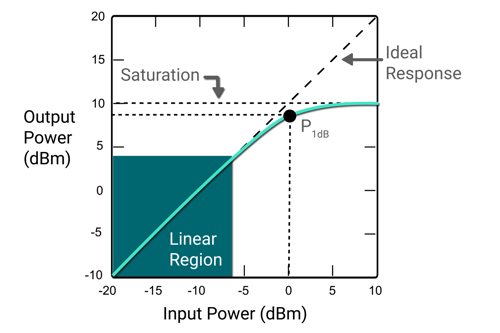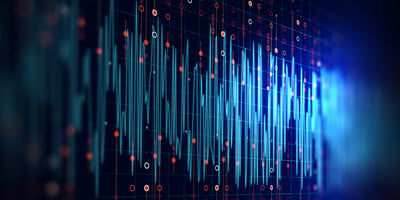Today we’re going to talk about noise. In this context, noise refers to unwanted signals, whether...
How Can Additive White Gaussian Noise Assess Amplifier Linearity with the Noise Power Ratio?
Noise is everywhere. Today’s wireless systems must be able to operate efficiently as these electromagnetic disturbances (EM) threaten to corrupt transmissions and degrade performance.

An additive white Gaussian noise (AWGN) source simulates the random noise signals of nature and is often used by engineers to inject precise levels of noise into electronic systems. Important AWGN characteristics include:
- Gaussian amplitude distribution in the time domain
- Uniform power spectral density (PSD) in the frequency domain
From testing a system’s response to interference, maximizing the power levels of Directed Energy Weapons via coherence spreading, and securely encrypting sensitive data, AWGN sources are versatile tools that can improve advanced systems.
In this blog post, learn how AWGN can be used to determine the linearity of an amplifier in multi-carrier systems.
Amplifier Linearity: 1 dB Compression Point
Amplifiers increase the power of an input signal by a specified gain and a theoretical linear amplifier would continue to add that gain for the entire input signal range. At some input signal level, the amplifier fails to increase gain in a linear fashion and is stated to be in compression. This nonlinear behavior creates waveform distortion and limits amplifier performance. The 1 dB compression point (P1dB) of an amplifier is a very common figure of merit.
Single Tone Test
The diagram below illustrates P1dB when the amplifier’s output falls below the linear gain slope by 1 dB. 
Two-tone Test
Nonlinearity in multi-signal systems generates intermodulation distortion (IMD), where the fundamental signals mix and create new frequencies. Appropriate filtering can typically eliminate IMD except for the 3rd order products, which are close to the original signals.
A two-tone test can be used in this case to evaluate IMD and the linearity of an amplifier.

The test involves plotting the input power vs. output power of the fundamental signal and 3rd order products, which increase in amplitude three times as fast. The intersection of each tone's ideal, linear pathway is known as the 3rd order intercept point (IP3). Greater amplifier linearity correlates to a higher IP3 value.
Noise Power Ratio
Beyond a two-tone test, AWGN can be used to simulate many carrier signals. By determining an amplifier's noise power ratio (NPR), linearity can be assessed accurately for multi-carrier systems, such as those used in 5G and satellite applications.
NPR testing utilizes an AWGN signal that covers the appropriate bandwidth. A notch filter is used to create a deep, narrow notch in the noise band. Appropriate notch depth ensures the capture of all IMD products of interest.
As the AWGN signal passes through an amplifier, IMD products will gather at the notch frequency. NPR is determined by measuring the change in notch depth between the amplifier’s input and output on a spectrum analyzer. A low NPR indicates a notable decrease in notch depth due to IMD.
To learn how NPR can help test 5G and satellite communications systems, read the Noisecom solutions guides below.
Did you know that crest factor (CF) can also be used to assess amplifier linearity? This technique uses an AWGN source as well as peak power sensors for CF measurements. Learn all about the CF method in the blog post, "How Can Crest Factor Be Used to Assess Amplifier Linearity?"
On-demand Webinar on AWGN Generation
The webinar, “How to Optimize the Performance of Your System by Integrating an AWGN Source,” is currently available on demand. Viewers will learn essential AWGN characteristics, practical calculations, common forms of packaging, and different ways AWGN sources integrate into advanced systems.
Watch the webinar today to uncover the utility of AWGN.






